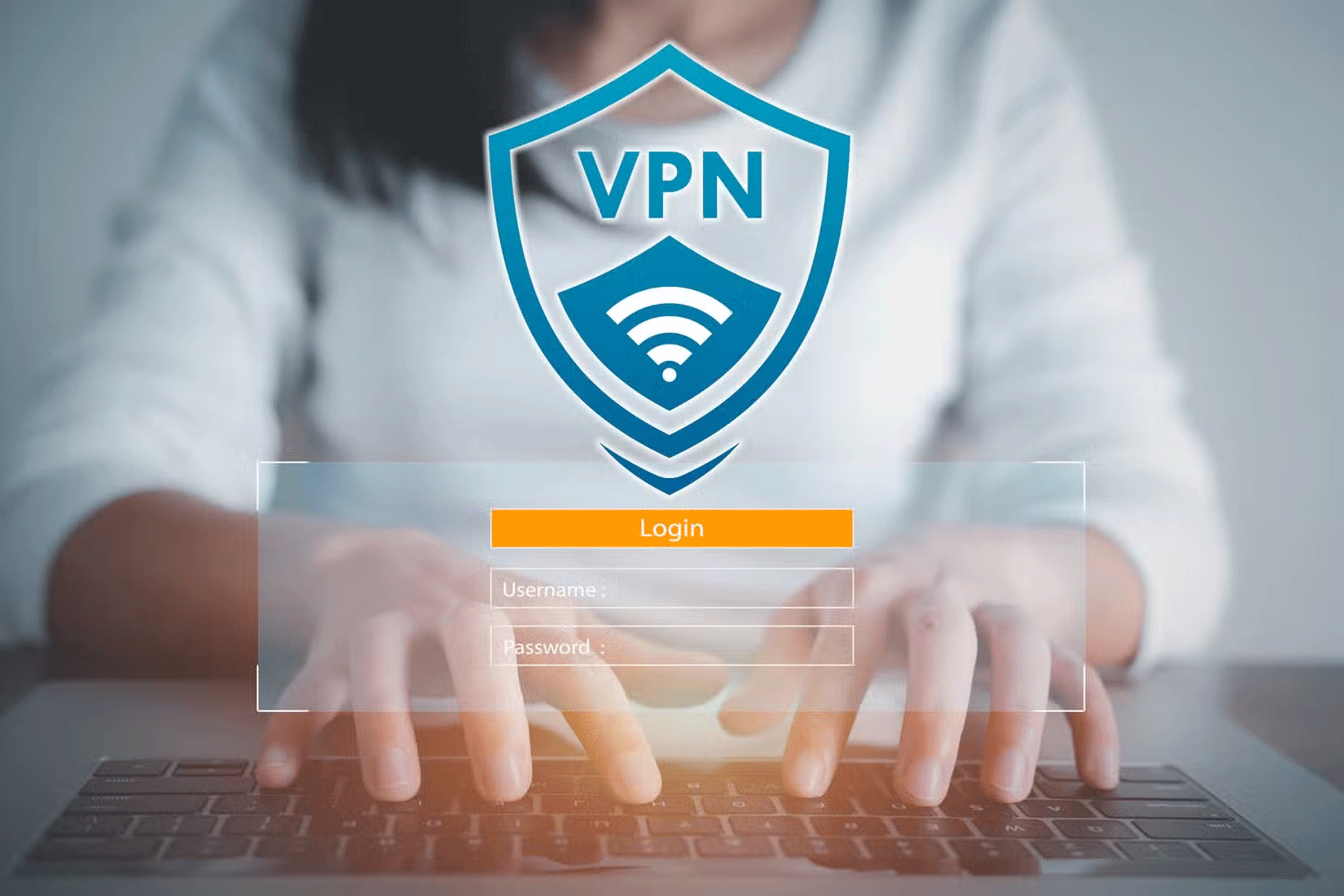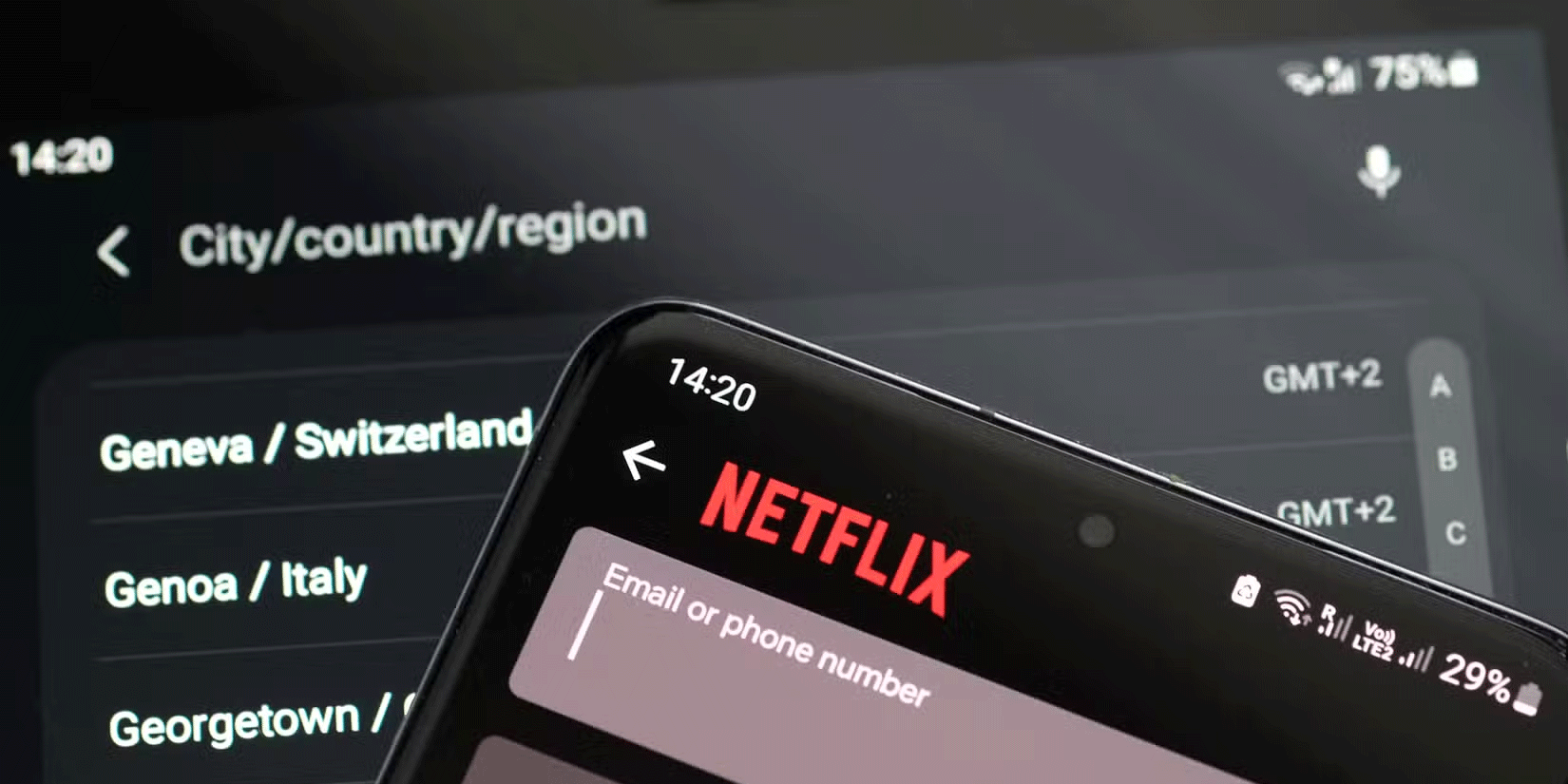Why VPNs Are Getting Detected More Than Ever
1. Suspicious login form

One common way websites detect VPN use is by tracking a user's login location. If a single user logs in from different locations within a short period of time using the same device, websites can recognize this as a sign that a VPN is being used to mask their location. For example, if you log in from the US one moment and then switch to Australia the next, that could be a red flag.
Additionally, if multiple users connect to the same website or service via a shared IP address from the VPN server, this pattern may signal VPN use. To minimize detection, connect to VPN servers near your location and consider using a dedicated IP, which provides a unique address just for you, avoiding noticeable location changes.
2. Connect to blacklisted IP address
Companies often keep lists of blacklisted IP addresses associated with VPNs and proxies, allowing them to block unwanted traffic. If you are using a free VPN with IP addresses shared between multiple users, there is a chance that you may be connecting via one of these blacklisted IPs, allowing the website to detect and mark your session as a VPN connection .
To avoid this problem, consider using a single dedicated IP for a user who is less likely to be flagged. If you can't afford a dedicated IP address and prefer a free VPN connection, choose a service with a large, regularly updated pool of IP addresses to minimize the chance of being spotted.
Avoid using VPN servers in countries like China, Russia, Syria, Iran, etc., as your traffic is likely to be blocked by default.
3. Advanced detection technology

Companies are using advanced technologies like Artificial Intelligence (AI) and Machine Learning to detect VPN traffic . Tools like Deep Packet Inspection (DPI) analyze metadata in transmitted data packets, helping to identify common VPN parameters like encrypted headers or unusual protocols. This makes it easier to detect VPN traffic patterns.
While complete anonymity may not be possible, VPNs with features like 'stealth mode' or 'obfuscation' can help disguise VPN traffic as regular internet data, reducing the likelihood of detection. However, this is not perfect as AI technology and machine learning techniques are rapidly evolving.
4. TLS Fingerprint and Devices
Similar to deep packet inspection, TLS (Transport Layer Security) and device fingerprinting are techniques that websites use to detect VPN usage. Device fingerprinting creates a unique 'fingerprint' by collecting specific device details, so connecting from different locations with the same fingerprint often signals that you are using a VPN.
VPN providers often use unique TLS configurations, and websites can block connections if the TLS fingerprint matches known VPN configurations. While you can't completely bypass such detection, using the same server and a dedicated IP can help. You can also use VPN providers that don't often reuse TLS configurations across multiple users to reduce the chance of detection.
5. Stricter content licensing agreements

Content licensing agreements often restrict where media can be legally accessed. To enforce these restrictions, platforms must use robust VPN detection to ensure viewers can only access content from approved regions. Companies invest heavily in VPN detection tools to avoid violating agreements with content creators and distributors.
If a service detects a VPN and restricts your access, there's generally not much you can do. You can use a VPN connection with premium servers in the best regions to avoid detection, but you have to avoid doing so to access content that the platform or streaming service isn't allowed to show in your region.
This is why websites and services are now much better at detecting VPN use than they used to be. If a service or platform doesn't allow VPNs, follow that rule to avoid account suspension, especially for financial services.
You should read it
- 15 useful inventions to make things easier
- MS PowerPoint: Tips or making rich slide shows
- Offer IObit Uninstaller 7 Pro, the software to remove computer programs for $ 9.99, is free
- How to debug websites on iPad
- Apple fixes the trackpad error on the 2012 MacBook Pro
- Decode the meaning of Intel processor chip name structure
- Adjust bandwidth saving via QoS (Part 3)
- What is Bixby? 4 ways to use Bixby on Samsung phones
May be interested
- Boot Failure Detected Error – Pocket the Fix Now
 tipsmake has helped you solve the boot failure detected error quickly and effectively. check it out now!
tipsmake has helped you solve the boot failure detected error quickly and effectively. check it out now! - Don't Believe the Hype: Free VPNs Can Be Just Fine!
 free vpns often get a bad rap for stealing user data, but that's not always true. some reputable providers offer the same level of security as paid services, just with fewer features.
free vpns often get a bad rap for stealing user data, but that's not always true. some reputable providers offer the same level of security as paid services, just with fewer features. - How to fix 'Network Change Was Detected' error in Chrome
 even though chrome is the most popular browser in the world, you may encounter the error message err_network_changed your connection was interrupted: a network change was detected .
even though chrome is the most popular browser in the world, you may encounter the error message err_network_changed your connection was interrupted: a network change was detected . - How to Fix an 'External Hard Drive Not Detected' Error on PC or Mac
 this wikihow teaches you how to fix an 'external hard drive not detected' error on your computer. there are a number of issues that can cause an external hard drive to not be detected. it could be a simple issue with the cord, usb port, or...
this wikihow teaches you how to fix an 'external hard drive not detected' error on your computer. there are a number of issues that can cause an external hard drive to not be detected. it could be a simple issue with the cord, usb port, or... - Fixed Game Security Violation Detected in Windows 10
 if you see the game security violation detected error when launching the game in windows 10, the fix is quite easy. here is how to resolve this game error.
if you see the game security violation detected error when launching the game in windows 10, the fix is quite easy. here is how to resolve this game error. - 7 Best VPNs for Streaming Content
 tipsmake.com has compiled a list of the best vpns for streaming videos for your reference!
tipsmake.com has compiled a list of the best vpns for streaming videos for your reference! - Fix iTunes error: 'An iPhone Has Been Detected But It Could Not Be Identified'
 if connecting an iphone or ios device to a windows computer, in some cases an error will occur and this makes the user feel uncomfortable. recently, many users reflect that in the process of connecting iphone to windows computer, they received an error message saying 'an iphone has been detected but it cannot be identified'. although tried many different ways, using another usb cable, changing the usb port, ... but still cannot fix the error.
if connecting an iphone or ios device to a windows computer, in some cases an error will occur and this makes the user feel uncomfortable. recently, many users reflect that in the process of connecting iphone to windows computer, they received an error message saying 'an iphone has been detected but it cannot be identified'. although tried many different ways, using another usb cable, changing the usb port, ... but still cannot fix the error. - Do VPN providers keep track of your browsing data?
 we use vpns to protect our privacy in the internet world, avoiding the eyes of hackers, network service providers and data thieves. however, have you ever wondered if it is the companies that provide vpns that collect your browsing data?
we use vpns to protect our privacy in the internet world, avoiding the eyes of hackers, network service providers and data thieves. however, have you ever wondered if it is the companies that provide vpns that collect your browsing data? - Kaspersky: 2008 detected 15 million new malware
 statistics released by security firm kaspersky yesterday (december 4) showed that the total number of new malware detected in 2008 reached 15 million.
statistics released by security firm kaspersky yesterday (december 4) showed that the total number of new malware detected in 2008 reached 15 million. - 5 the best 100% free VPN
 introduce 5 free vpns including: uvpn - zenmate - earth vpn - touch vpn. explain whether you should use a free vpn and how it is different from paying.
introduce 5 free vpns including: uvpn - zenmate - earth vpn - touch vpn. explain whether you should use a free vpn and how it is different from paying.










 How to Share Your Exact Location with Google Plus Codes
How to Share Your Exact Location with Google Plus Codes Why does Windows operating system have such a bad reputation?
Why does Windows operating system have such a bad reputation? What information can your ISP see when you turn on a VPN?
What information can your ISP see when you turn on a VPN? Microsoft's official Windows 11 virtual machine is no longer available
Microsoft's official Windows 11 virtual machine is no longer available Modern malware has more sophisticated ways of hiding
Modern malware has more sophisticated ways of hiding 4 Mistakes to Avoid When Setting Up a Password Manager
4 Mistakes to Avoid When Setting Up a Password Manager